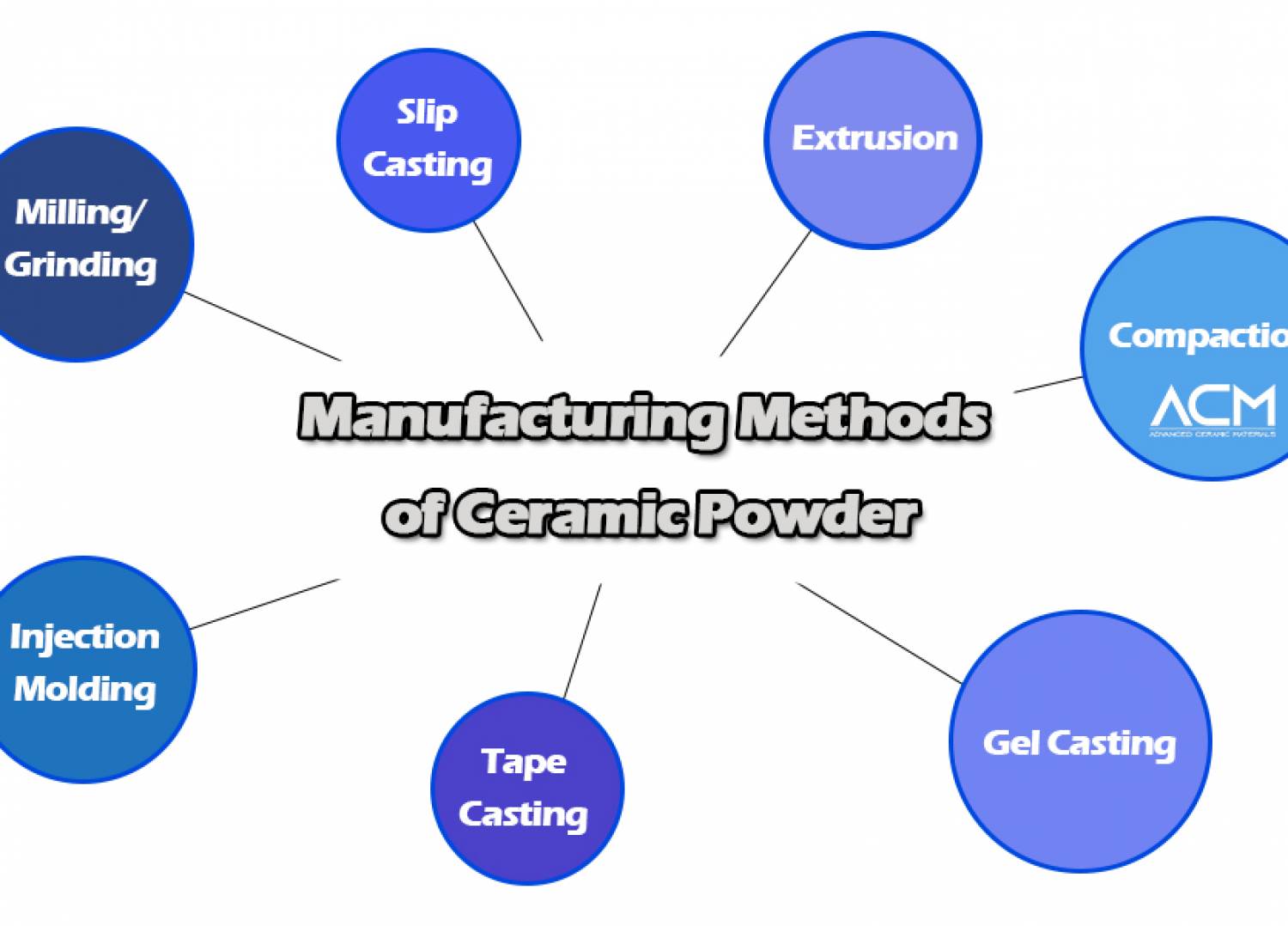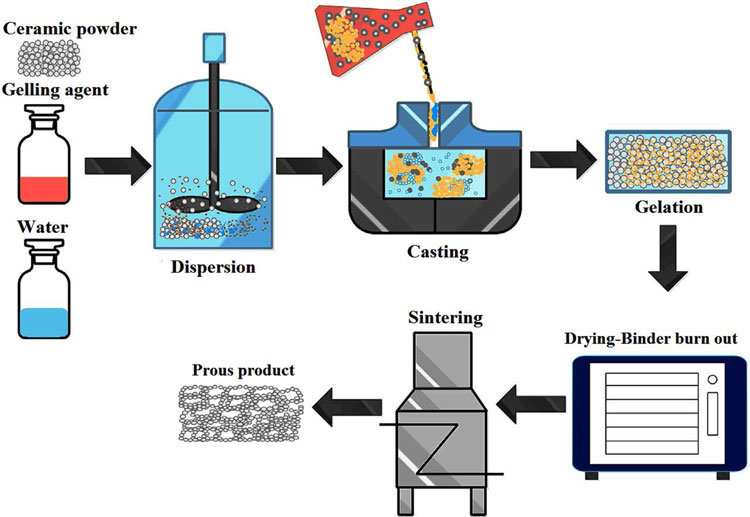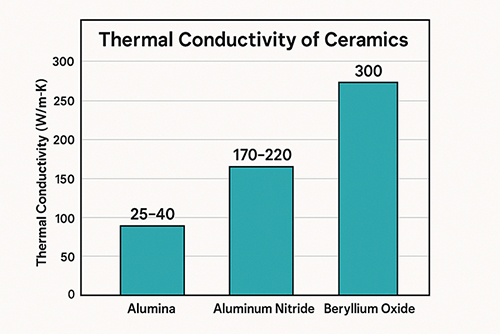How to Make Ceramic Powder?

What is Ceramic Powder?
A powder is a collection of fine particles. Ceramic powder is a granular material composed of various ceramics. It includes oxides like silicon oxide, zirconium oxide, and aluminum oxide. It also includes nitrides and carbides. Ceramic powder can be used in making building materials, art, and earthenware. The list is endless. Numerous methods are used to manufacture ceramic powders. Each method has properties that distinguish it from all other methods.
What are the Manufacturing Methods of Ceramic Powder?
Milling/Grinding
Milling, also called grinding, is a method of manufacturing ceramic powder that involves decreasing the particle size of a ceramic material until it is converted to powder form.

Compaction
This method is used to convert ceramic powder from its granular form to a more cohesive and denser form. As the name implies, this process makes ceramic powder more compact. Compaction of ceramic powders can be done through hot pressing or cold pressing. The product of this process is usually termed green material. This green material then goes through sintering. The properties of the green material are quite different from that of the ceramic powder. After the compaction process, the material should be devoid of large defects and possible to maneuver.
Injection Molding
Injection molding is used to produce ceramic materials with complex geometries. This process can be used to produce ceramic materials in large quantities. Injection molding is a versatile process. It is used for both oxide ceramics and non-oxide ceramics. In addition, it is highly precise. The end product of injection molding is of high quality. The ceramic powder is mixed with a polymeric binder and heated in this process. Injection molding shrinks the material. However, the shrinkage is made up for during the sintering process.
Tape Casting
Tape casting is another common manufacturing method for ceramic powders. It is used in making substrates for integrated circuits. Also, it is used in making structures for integrated-circuit packages and multilayer capacitors. A ceramic powder mixed with an organic solvent and polymer binder is repeatedly cast on a carrier surface. The carrier surface is made of a material like Teflon which is non-stick. The ceramic powder mixture (slurry) is then spread to a specified thickness on the smooth surface using a knife edge. The layer of ceramic powder mixture dries and is ready for further processing.
Slip Casting
Slip casting is a manufacturing method of powder ceramics often used in pottery. It is usually used to create shapes that are not easily created on a wheel. Slip casting is a time-consuming process taking as long as 24 hours. On the upside, however, the final product is precise and consistent. Slip casting has been in existence as far back as the 1750s in Europe and even earlier in China. The ceramic powder is placed in a suspension that allows it to form a slip. The slip is then poured into a porous mold. The mold dries, forming a solid layer from the slips.
Gel Casting
Gel casting is a manufacturing method of ceramic powders that started in Canada in the 1960s. It is used to produce complex ceramic shapes with high quality and strength.

Azarniya, Abolfazl & Azarniya, Amir & Safavi, Mir & Farshbaf Ahmadipour, Mohammad & Seraji, Melica & Sovizi, Saeed & Saqaei, Mahboobe & Yamano lu, Ridvan & Soltaninejad, Mohammad & Madaah Hosseini, Hamid Reza & Ramakrishna, Seeram & Kawasaki, Akira & Adams, Stefan & Reddy, M V. (2019). Physicomechanical Properties of Porous Materials by Spark Plasma Sintering. Critical Reviews in Solid State and Materials Sciences. 45. 1-44. 10.1080/10408436.2018.1532393.
In this method, the ceramic powder is mixed with a monomer, cross-linker, and free radical initiator. The mixture is then added to an aqueous suspension. The binder present in the mixture is polymerized to add more rigidity to the mixture. As a result, the mixture takes on a gel form. The gel mixture is cast into a mold where it is solidified. After solidifying the mixture, it is removed from the mold and dried. The final product is a green body that is subsequently sintered.
Extrusion
Extrusion is a manufacturing method of ceramic powder that can be used to form ceramics into shapes. The ceramic powder is pulled through a die with a specific cross-section. This method can be used to manufacture ceramics with complex cross sections. In addition, it does not put materials through enough stress to break them. The end products from this process have a commendable surface finish and high strength. The first extrusion process took place in 1797. It was carried out by a man known as Joseph Bramah. Extrusion may be hot, warm, or cold. Hot extrusion occurs at a temperature that exceeds the material's recrystallization temperature. Cold extrusion occurs at room temperature while warm extrusion occurs above room temperature and below the material's recrystallization temperature.
Conclusion
The method you choose for manufacturing your ceramic powder depends on factors like desired product, technical know-how, and resources available. Some of the major methods include grinding/milling, compaction, injection molding, tape and slip casting, etc. Thank you for reading our article and we hope it can help you to have a better understanding of the manufacturing flow of ceramic components. Advanced Ceramic Materials (ACM) supplies high-quality ceramic powder and related products to meet our customers’ R&D and production needs. Please visit https://www.preciseceramic.com/ for more information.
{{item.content}}
LEVE A REPLY
{{item.children[0].content}}
{{item.content}}
LEAVE A REPLY
SUBSCRIBE OUR NEWSLETTER
- Boron Nitride in Cosmetics: Enhancing Performance and Sensory Appeal
- Maximize MOCVD Yield and Purity with Hexagonal Boron Nitride Setters
- What Are the Advantages and Uses of Boron Nitride Ceramic Sheet?
- The Compression Annealing Advantage for Pyrolytic Boron Nitride
- Beyond Insulation: The Surprising Spectrum of Ceramic Thermal Conductivity











